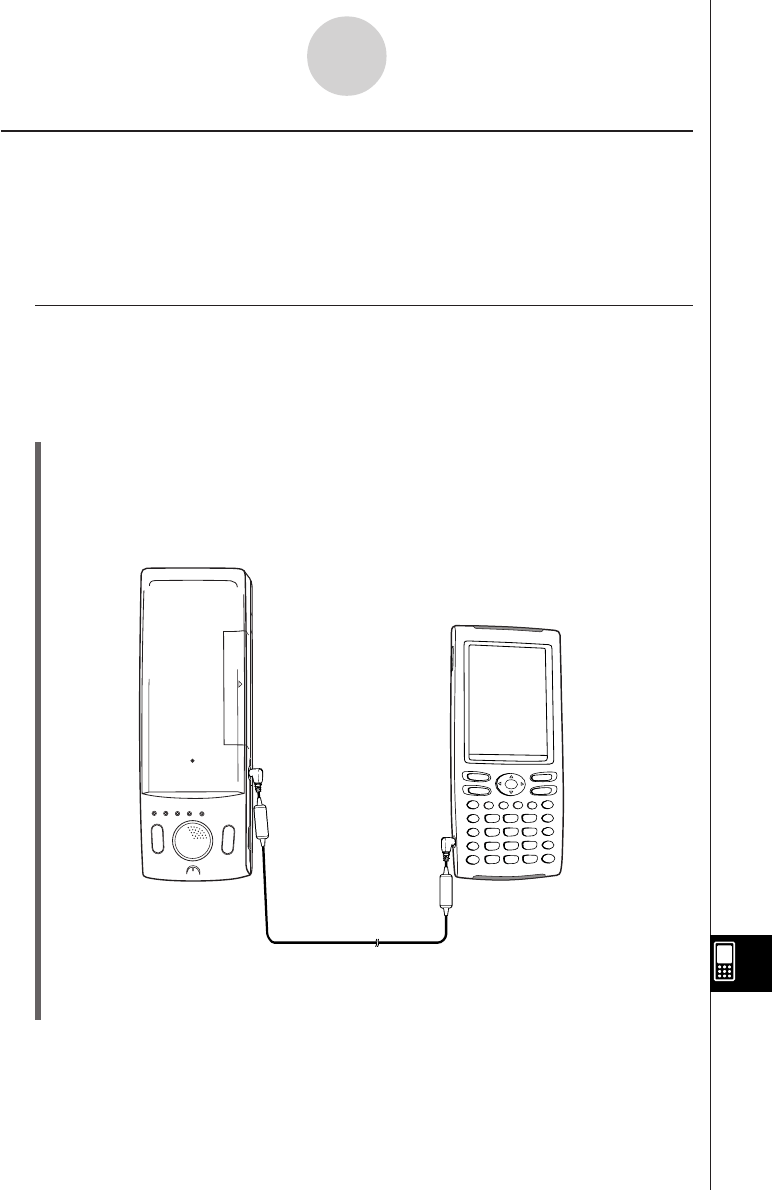User Manual
Table Of Contents
- Getting Ready
- Contents
- About This User’s Guide
- Chapter 1 Getting Acquainted
- Chapter 2 Using the Main Application
- 2-1 Main Application Overview
- 2-2 Basic Calculations
- 2-3 Using the Calculation History
- 2-4 Function Calculations
- 2-5 List Calculations
- 2-6 Matrix and Vector Calculations
- 2-7 Using the Action Menu
- 2-8 Using the Interactive Menu
- 2-9 Using the Main Application in Combination with Other Applications
- 2-10 Using Verify
- Chapter 3 Using the Graph & Table Application
- Chapter 4 Using the Conics Application
- Chapter 5 Using the 3D Graph Application
- Chapter 6 Using the Sequence Application
- Chapter 7 Using the Statistics Application
- 7-1 Statistics Application Overview
- 7-2 Using List Editor
- 7-3 Before Trying to Draw a Statistical Graph
- 7-4 Graphing Single-Variable Statistical Data
- 7-5 Graphing Paired-Variable Statistical Data
- 7-6 Using the Statistical Graph Window Toolbar
- 7-7 Performing Statistical Calculations
- 7-8 Test, Confidence Interval, and Distribution Calculations
- 7-9 Tests
- 7-10 Confidence Intervals
- 7-11 Distribution
- 7-12 Statistical System Variables
- Chapter 8 Using the Geometry Application
- Chapter 9 Using the Numeric Solver Application
- Chapter 10 Using the eActivity Application
- Chapter 11 Using the Presentation Application
- Chapter 12 Using the Program Application
- Chapter 13 Using the Spreadsheet Application
- Chapter 14 Using the Setup Menu
- Chapter 15 Configuring System Settings
- 15-1 System Setting Overview
- 15-2 Managing Memory Usage
- 15-3 Using the Reset Dialog Box
- 15-4 Initializing Your ClassPad
- 15-5 Adjusting Display Contrast
- 15-6 Configuring Power Properties
- 15-7 Specifying the Display Language
- 15-8 Specifying the Font Set
- 15-9 Specifying the Alphabetic Keyboard Arrangement
- 15-10 Optimizing “Flash ROM”
- 15-11 Specifying the Ending Screen Image
- 15-12 Adjusting Touch Panel Alignment
- 15-13 Viewing Version Information
- Chapter 16 Performing Data Communication
- Appendix

20050501
16-2-2
Connecting the ClassPad to Another Device
Connecting to an EA-200 Data Analyzer
You can use the CASIO Data Analyzer to sample and collect data on various everyday
natural phenomena. You can also connect the Data Analyzer to your ClassPad, and control
Data Analyzer operation from your ClassPad. You can transfer setup information from the
ClassPad to the Data Analyzer, trigger sampling from the ClassPad, and graph sample
results on your ClassPad.
k Required Hardware
ClassPad: 1 unit
EA-200 Data Analyzer: 1
Special SB-62 Cable: 1
u ClassPad Operation
(1) Turn off the ClassPad and Data Analyzer.
(2) Remove the connector cover from the 3-pin communication port of the Data Analyzer,
and connect one end of the data communication cable to the port.
(3) Connect the other end of the data communication cable to the 3-pin communication
port of the ClassPad.
• For information about what you should do to transfer data, see the user
documentation that comes with the Data Analyzer.
Cable
Ready
Sampling
Error
Batt Power
SET UP
START/STOP










